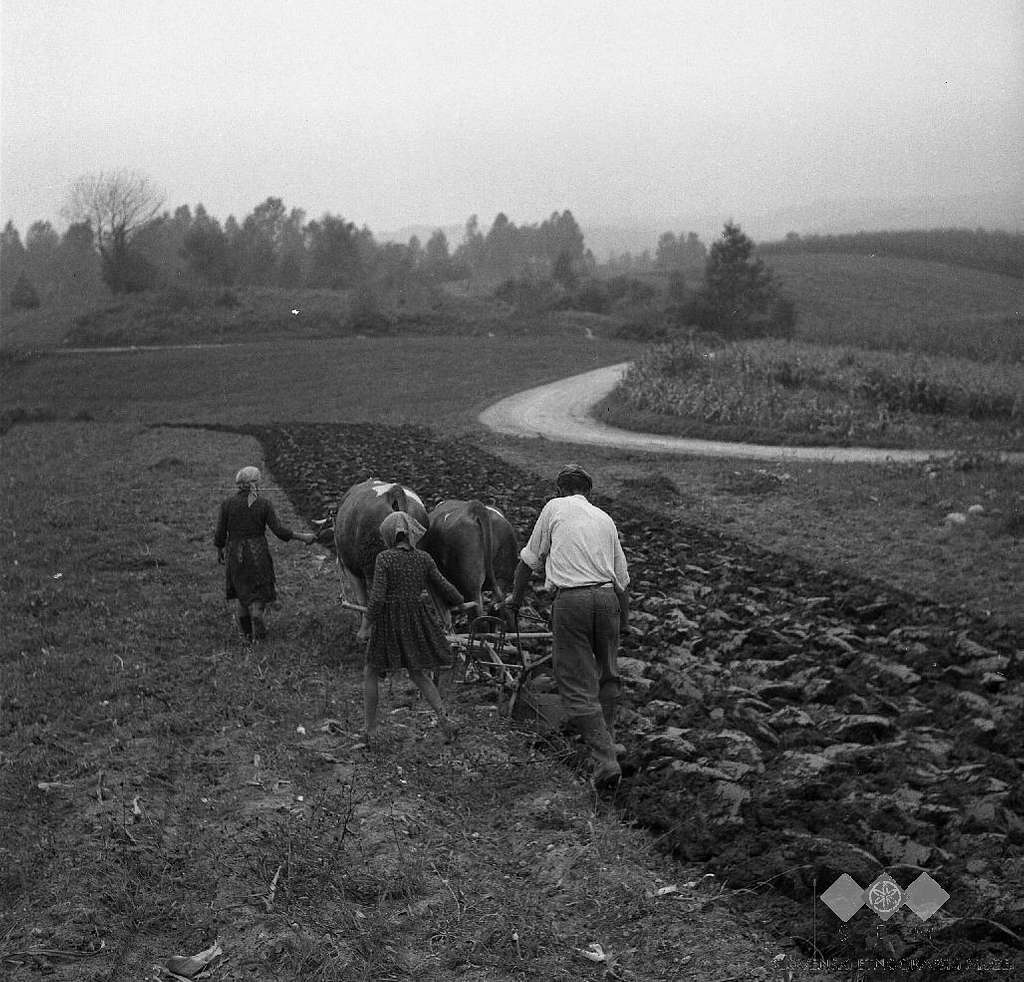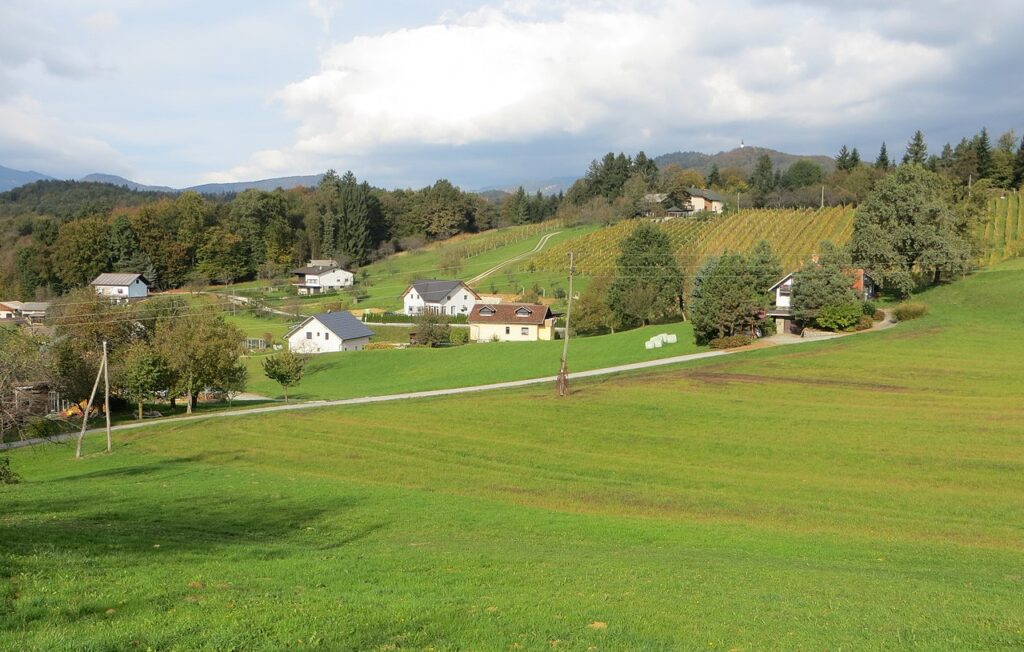After the second world war the slovenian agriculture is taking a gradual but constant shift. In the beginning of the second half of the 20th century most of the population was relying on farming as their main source of income supplemented by tradesmen activities during the down period.

This gradually changed as the push for industrialization drove people from the farms into cities that offered better living. The government encouraged farming innovation by establishing cooperatives (Zadruge) where traditionally small farmers could borrow machinery in order to increase their productivity. The general layout of Slovenia does not promote large scale food production that is prevalent in most of the modern world. Even with merging of farms, increase in mechanisation and advances in other fields the farming is not a profitable business and a large portion of the population maintains farms as a secondary activity subsidising their income from the regular job. At present only about 5% of the population is reliant on farming for their income. And this is with subsidies offered by the EU for their work – these provide a major incentive for continuing in the field that would otherwise be too expensive to work with.
There is however an interesting and relatively large class of people who work a full time job but maintain a small farm in order to reduce their daily expenses. These are usually children of farmers, who inherited the land from their parents who also invested in the equipment.
The hallmark and the simbol of these farmers is perhaps the tractor. (Tomo Vinkovič)
These humble looking tractors, first produced in 1976 are incredibly robust and versatile. The production of these tractors stopped in 1989. But even more than 30 years later they are still the most common tractor in slovenia. They offer a lot of versatility due to the modifications done by the farmers who in order to reduce costs modified their horse and oxen driven implements to attach to these “beasts of burden”.
Due to specificity of the land the government put a lot of emphasis on the education of their farmers establishing a specialised Faculty in 1947 (Directly after the end of WW2). The Faculty has been focused on innovation, establishing several new cultivars that suit the Slovenian climate. Due to the changes in the environment – dryer summers – they are trying to develop specific drought resistant crops.
Prognosis:
Slovenian agriculture is on one hand behind in development due to fractalization – a lot of small farms that are not sustainable on their own. Because of this it is – on average – a few decades behind the neighbouring countries. But this is not necessarily a bad thing. Newer technologies that are gaining traction in the opposite side of the spectrum could be implemented extremely efficiently on these smaller plots of land that emphasise automation on a smaller scale. It is expected that a large sector of the industry could be established that would embrace a high level of automation on a small scale. This scale enables people to implement sustainability practices that provide long term goals, emphasise natural fertilisation and enable smaller productive farms with specific goals.
Chances for cooperation:
Slovenia is running a food production deficit, producing only around 80% of the food it requires. This and the fact that it has an access to its port makes it a good candidate for food imports. The food must however keep in line with the EU standards. A cooperation on this level would mostly be feasible in the non perishable goods. Investments in the canning industry in Cameroon that would transport its produce to Slovenia would gain a lot of traction. Slovenia is also a good candidate for import of frozen fish – as these are relatively expensive due to history of overfishing and lack of facilities that would grow fish on an industrial scale.
On the export side, Slovenia is a good candidate to export knowledge and farming equipment. A large pool of used farming equipment can be bought and refurbished to function in Cameroon giving a major boost to the farming communities. Slovenia also has several specialised farming equipment producers that produce durable but simple farming equipment that could be modified to meet the needs of the farming communities. This could take the form of direct equipment exports or more likely investment in building industries in the region that could produce farming equipment for the extended region.

The practical knowhow of the farmers combined with the advanced knowledge of the faculty could also be harnessed for good effect to develop new farming communities focused on sustainability and producing better and more diversified farming practices.
However you look at it. Farming is in dire need of advancement in both countries. And while the crops grown in them are completely different from one another, lessons learned in one can be translated to the other. Slovenia is facing problems that have been faced by the Cameroonian population for decades and should look to them for answers and adaptation. On the other hand it is expected that Cameroon will undertake similar urbanisation trends as Slovenia did in the 1960-1990 and studying what happened is an important lesson for the burgeoning Cameroon state.
